12 Daily Touchstones Can Improve Our Teaching
Goodwin and Hubbell are co-authors of the influential book The 12 Touchstones of Good Teaching: A Checklist for Staying Focused Every Day (McREL/ASCD, 2013), from which this article is adapted with permission. It’s longer than our usual post, but we’d suggest it’s a must-read for educators across the spectrum.
By Bryan Goodwin & Elizabeth Ross Hubbell
In The Checklist Manifesto: How to Get Things Right, surgeon Atul Gawande (2009) describes his effort to apply aviation-style checklists to the chaotic environment of the emergency room, where smart, well-educated people sometimes make deadly mistakes that could have been avoided had they only taken a moment to reflect on what they were doing.


When a battery of checklists was applied throughout the state of Michigan, some $175 million in costs and 1,500 lives were saved (Gawande, 2009). So we asked ourselves, could checklists have a similar positive effect in classrooms?
What if doing things differently made a difference?
All of these data from the medical world are impressive. Still, educating a child isn’t a step-by-step procedure like surgery. It’s more complex. Teachers must get to know their students and respond to each according to his or her individual needs. There’s no prescribed formula or process to follow for that.

Like medicine, education has had less-than-stellar success rates. Teachers are not to blame for all of these problems. Nevertheless, decades of research suggest that effective teachers can have a tremendous, positive effect on student success.
It would be one thing, of course, if we had no idea what great teachers do to get these kinds of results. Fortunately, decades of education research have given us a great deal of insight into what works in the classroom, allowing us to identify specific teacher behaviors and practices that can make a big difference for students.
Stated differently, what research also suggests is that teachers can devote time to the wrong things, engaging in practices that simply don’t work—or that don’t work as well as other practices.
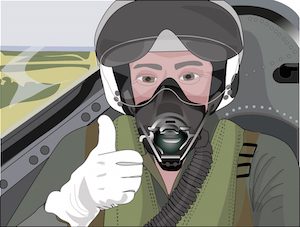
To a large extent, the same thing could be said of education. Effective teachers do not operate on different school calendars or with longer class periods; they simply do things differently with the time they’re given.
Any teacher might therefore wonder: What different actions could I take in my classroom to help more students become more successful?
If there were one thing you could do differently each day to help just one student do a little better, would you do it? What about three things to help three students? What if there were 12 things you could do every day to help all of your students? Would you do them?
If we know better, why don’t we do better?
Given everything we know about good teaching practices (and the fact that none of it has been kept a secret), we might expect to see research-based practices universally applied in most, if not all, classrooms. Unfortunately, that’s not what we see. Generally speaking, teachers appear to be struggling to apply what we know from research in their practices.

Why our checklist?
Ours is not the first or only checklist created for teachers, of course. The Internet is replete with them. Most of these checklists, however, focus on very specific tasks, such as unpacking standards, planning lessons, assessing student leadership qualities, or ensuring classroom orderliness.
We felt we might contribute something far more valuable to educators if we could provide something of a master or meta-checklist—one that encapsulates and balances the big ideas about what it takes to be a great teacher: the ability to be demanding, supportive, and intentional.
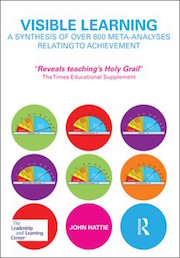
Accordingly, we don’t dwell on things such as classroom configuration or parental communication. Although both are important (certainly, there’s no case to be made for cluttered classrooms or stonewalling parents), there’s not an abundance of data that suggest they are so important that educators should strive to do them every day. They may be better conceived as secondary behaviors or as practices that support other, more critical components and deep principles of effective teaching.
Providing a Do-Confirm list, not a Read-Do list
For some, teaching by checklist may conjure up images reminiscent of George Orwell’s 1984—of teachers mindlessly following edicts from central command. Checklists, however, don’t tell us what to do. They are not formulas.
Rather, they help us ensure that we’ve got all the information we need to help us become more systematic about our decision making and not overlook anything important. Indeed, when it comes to endeavors with “true complexity—where the knowledge required exceeds that of any individual and unpredictability reigns,” Gawande (2009) cautions that dictating every move “from the center will fail” (p. 79).
If you’re a teacher reading this and hoping to follow simple, step-by-step formulas that will take the thinking out of teaching for you, then our ideas will likely disappoint you. If you’re an administrator hoping for a “Teaching for Dummies” approach that you can use to prescribe your teachers’ every action, then please set this article aside. That’s not what you’ll find in these words or in our book.

- A Do-Confirm checklist assumes that people mostly perform their jobs from memory but benefit from occasionally stopping and referring to a list to make sure they’ve done everything they’re supposed to do.
- A Read-Do checklist, on the other hand, “is more like a recipe. People carry out the tasks as they check them off” (Gawande, 2009, p. 123).
We have no intention of creating step-by-step instructions for educators to follow mindlessly. We believe teachers would (and should) find that insulting. There’s simply no way to boil everything teachers must do in the classroom down to simple, step-by-step directions.
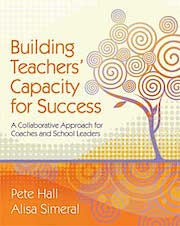
Our approach does not aim to be that kind of a Read-Do list. Rather, it aspires to be a bigger-picture, more universal Do-Confirm checklist that helps teachers become more mindful in their thinking about the big ideas of teaching, providing touchstones of great teaching for them (and their colleagues) to come back to, time and again, and ensure that they’re doing what matters most in the classroom.
►Read MiddleWeb’s review of
The 12 Touchstones of Good Teaching
The 12 Daily Touchstones
The 12 daily touchstones we present in our book are the hallmarks of effective instruction. Highly effective teachers:
- Challenge their students. Great teachers set high expectations for all students, challenging them with instruction that develops critical-thinking skills.
- Create positive classroom environments. Great teachers develop positive rapport with students, creating engaging classrooms that motivate learning.
- Are intentional about their teaching. Great teachers are clear about what they’re trying to teach and deliberately use a broad repertoire of instructional strategies to help students accomplish their learning goals.
For this checklist, we’ve articulated these touchstones as the following imperatives for teaching:
- Be demanding: Align teaching with high expectations for learning.
- Be supportive: Provide a nurturing learning environment.
- Be intentional: Know why you’re doing what you’re doing.
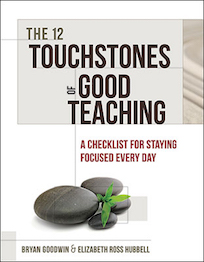
This overview is followed by a number of suggestions, resources, examples, and anecdotes to help teachers understand what these 12 touchstones actually look like in the classroom.
Are you ready to really do it this time?
We assume that, for most readers, the 12 ideas presented in the following checklist will not be earthshaking in their originality. Few may elicit a “Gee, I’ve never thought of that” response. However, if you take these items in the Do-Confirm spirit in which they’re offered, we believe readers may find themselves thinking, “You’re right. I do need to remember to _____ on a more consistent basis in my classroom.”
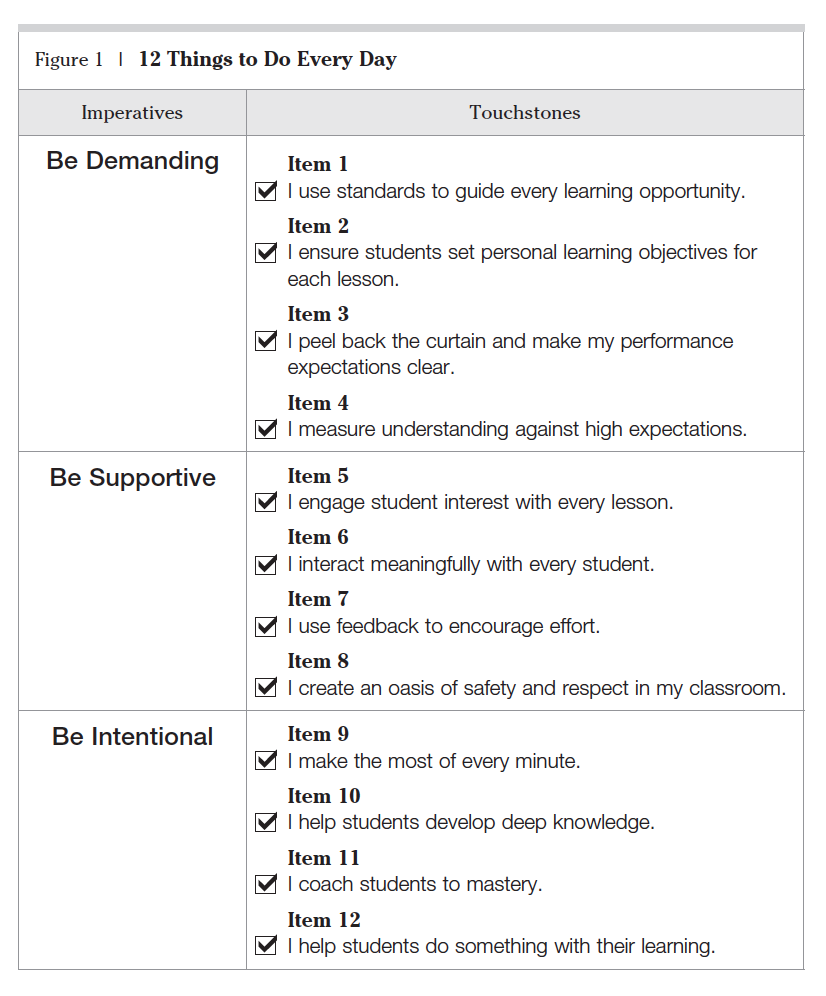
We would counter, however, by asking if it would be new for every teacher in your school to do all 12 of these things well, every day. How new would it be for you?
Herein lies the larger point of this book: for some time now, policymakers have fretted over finding some new approach, program, or innovation that could “fix” education. We wonder if perhaps the real solution might lie not in doing anything new but in a relentless focus on doing what we know must be done and doing it well in every classroom, with every student, every day of the week.
What if this is the fix for schools?
The aviation industry seems to have learned a thing or two about getting their jobs right every day. Consider what it would look like if the success rate for air travel were as low as 99 percent: 870 planes would fall out of the sky every day in the United States alone. If that were true, no one would dare fly anywhere.

“When we look closely, we recognize the same balls being dropped over and over even by those with great ability and determination,” Gawande (2009) observes. “We know the patterns. We see the costs. It’s time to try something else. Try a checklist.”
References
Gawande, A. (2009). The checklist manifesto: How to get things right. New York: Metropolitan Books.
Hall, P., & Simeral, A. (2008). Building teachers’ capacity for success: A collaborative approach for coaches and school leaders. Alexandria, VA: ASCD
Hattie, J. (2009). Visible learning: A synthesis of over 800 meta-analyses relating to achievement. New York: Routledge.
_________
Bryan Goodwin is Chief Operating Officer at McREL, a Denver-based nonprofit education research and development organization. A former teacher and award-winning journalist, he writes a monthly research column for Educational Leadership magazine. His previous books include Simply Better: Doing What Matters Most to Change the Odds for Student Success. He has presented research findings and insights to audiences across the United States and in Canada and Australia.
Elizabeth Ross Hubbell is Program Manager for Student Affairs at Academic Impressions and previously Supervising Principal Consultant in the Center for Educator Effectiveness at McREL. Her consultation services include conducting instructional technology audits and helping organizations strategize for the future. Elizabeth has served as a building-level curriculum director and elementary teacher. She is coauthor of Classroom Instruction That Works (2nd edition).






























I have taught online and off-campus to non-traditional students for many years and find your confirm lists do the trick. Can you cite essential empirical research to support the effective practices for good teaching?